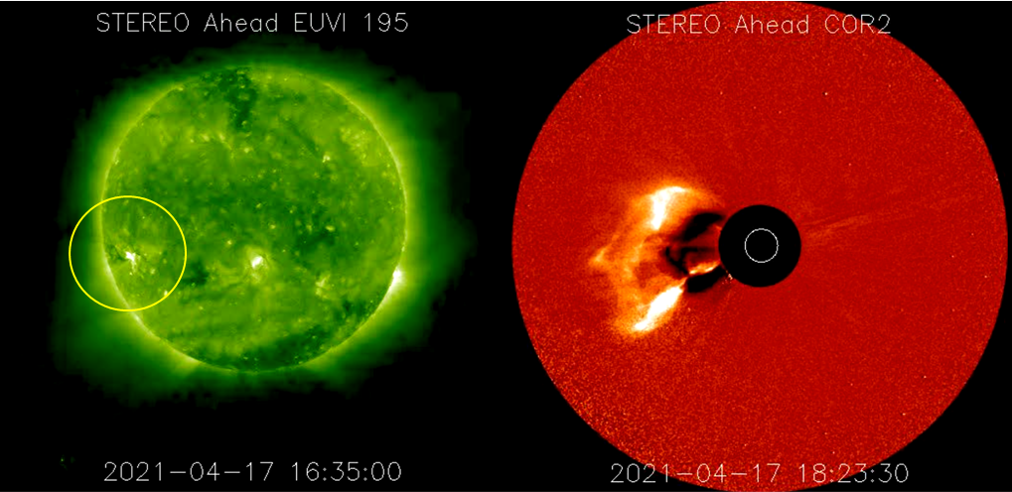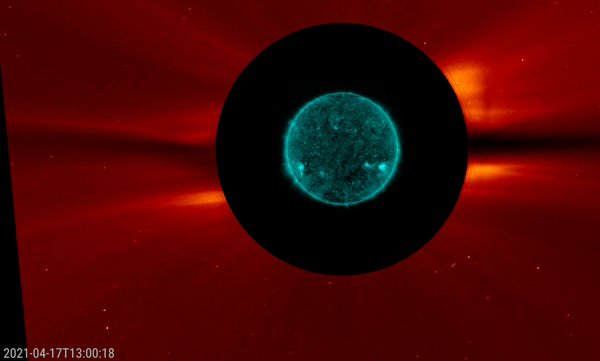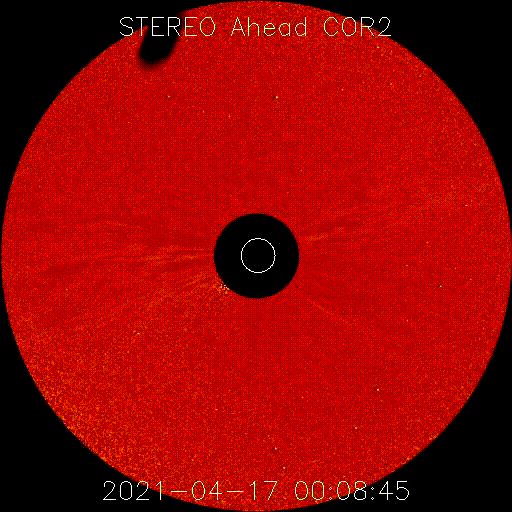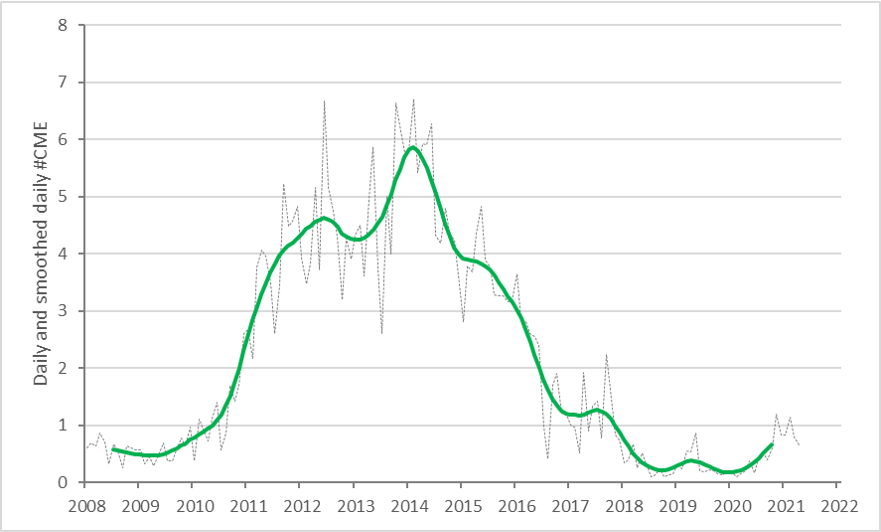On 17 April, a long-duration B9.7 flare was observed starting at 16:21UT and peaking at 17:17UT. Based on STEREO-A observations, the source of this eruption was about 20 degrees behind the Sun's east limb as seen from Earth. This implies that the flare's maximum x-ray flux must have been significantly higher as we did not see any of the footpoints of the flare, only the post-flare loop tops and the area just above. In extreme ultraviolet (EUV), the event showed some typical features of a strong flare, as can be seen in the SDO/AIA 131 imagery underneath:
- opening of the overarching loop structure and violent ejection of the magnetic flux rope (16:14UT image);
- supra-arcade downflows (SAD, also known as "tadpoles" - see this STCE Newsitem for more info) above the rising coronal loops, as can be seen in the resp. image of 17:14UT and 22:14UT.
EUV images made by the STEREO-A/EUVI 195 (movie) showed coronal dimming to the east of the active region, as well as a coronal wave directed mostly to the north and west. Both features are strong evidence that a coronal mass ejection (CME) was associated with this eruption.



Sure enough, coronagraphs onboard both SOHO (below) and STEREO-A (image above right, movie below) indicated a CME with a true speed around 740 km/s towards the east, meaning that -as seen from Earth- the CME had no earth-directed component. As seen from STEREO-A, the bulk of the CME was not directed towards the spacecraft. Coronagraphic images do not exclude a glancing blow from the CME to the spacecraft, but so far (early 21 April), no CME signatures have been recorded in the in-situ solar wind data.


As observed by CACTus in the SOHO coronagraph data (LASCO/C2), the number of CMEs has been gradually increasing over the last year. Graph underneath depicts the daily number of CMEs (averaged per month) and its smoothed value (Meeus) since the start of solar cycle 24. A maximum of nearly 6 CMEs per day was recorded early 2014. A minimum in the daily number of CMEs was observed in December 2019 (0.18), coinciding with the minimum sunspot number and the start of the new solar cycle 25 (see this press item). The current smooothed value is around 0.6 CMEs/day, still far away from the previous maximum but already 3 times more numerous than a good year ago. Excitement is building!






